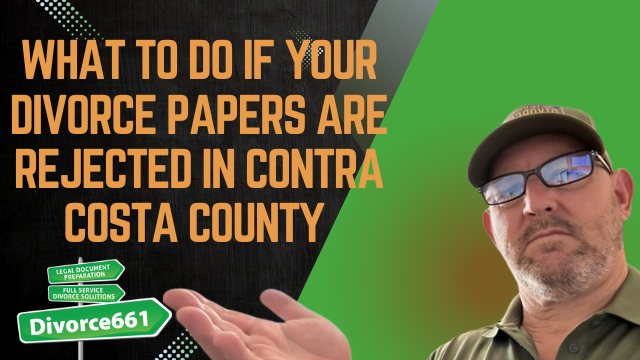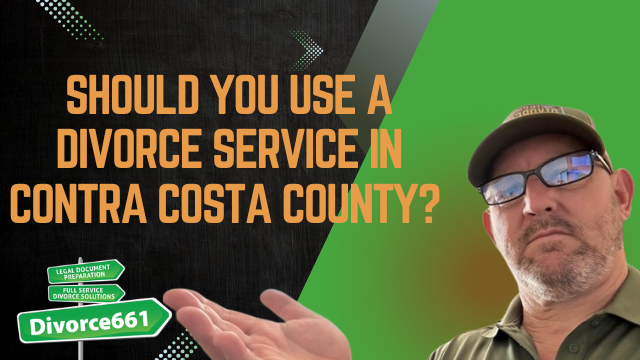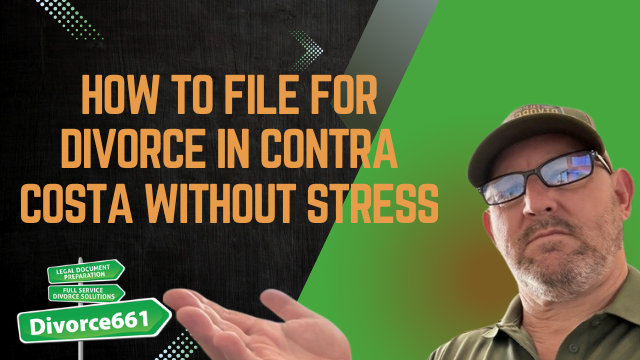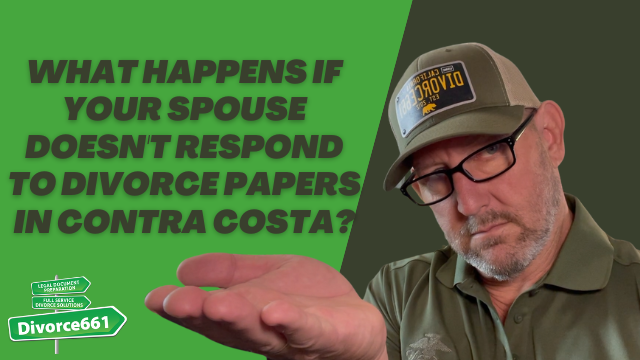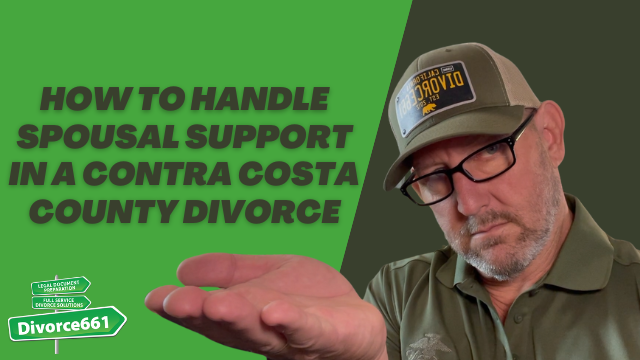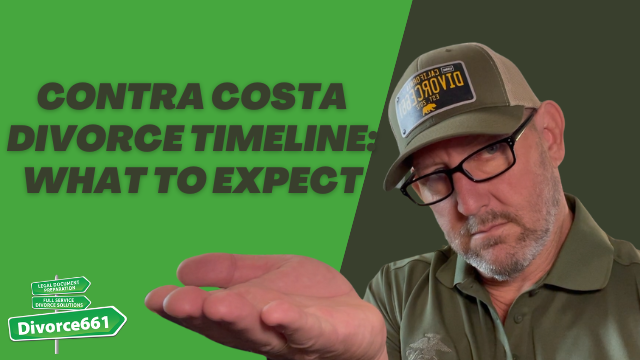What to Do If Your Divorce Papers Are Rejected in Contra Costa County | Contra Costa Divorce
I’m Tim Blankenship from Divorce661. If your Contra Costa County divorce paperwork was rejected, you’re not alone—and you’re not stuck. In this article I’ll walk you through why courts reject divorce forms, the most common mistakes to watch for, a real client example, and clear next steps you can take to get your case back on track quickly.
Why the Court Rejected Your Divorce Papers
Contra Costa County is strict when reviewing divorce paperwork. A single missing signature, an unsigned page, or a misformatted agreement can trigger a full rejection. The court will usually mail or e-file a rejection notice, but those notices can be confusing and full of legal language that’s hard to parse.
Common reasons for rejection
- Missing financial disclosures: Courts require complete and accurate financial information. Forgetting to include Form FL-142/FL-150 or similar disclosures is a frequent cause of rejection.
- Incomplete or incorrectly filled forms: Blank fields, inconsistent answers, or using the wrong version of a form can cause problems.
- Mismatched information: Dates, names, and numbers need to match across all documents. Mismatches raise red flags.
- Problems with the Marital Settlement Agreement (MSA): Formatting issues, missing initials on pages, or unclear terms in the settlement can lead to rejection.
- Minor oversights: Missing checkboxes, unsigned pages, or not initialing each page of an agreement are small errors that often result in a full return of the filing.
Why rejection notices are so frustrating
Rejection notices are meant to be helpful, but they often use court shorthand and legal jargon. Many folks trying to do their own divorce feel overwhelmed—unsure whether they need to correct one line or redo multiple documents. That uncertainty is why people often come to us after one or more rejections.
Real client example: Martinez case study
Recently we helped a client from Martinez who had their judgment rejected twice. The first rejection was for missing financial disclosures. The second stemmed from formatting issues in their Marital Settlement Agreement. They were frustrated and ready to give up.
We reviewed their entire case, corrected the disclosures, reformatted and corrected the settlement agreement, and resubmitted the judgment. The court approved their divorce in less than three weeks.
“They came to us frustrated and ready to give up. We reviewed their entire case, fixed the errors, and resubmitted the paperwork. The court approved their divorce in less than 3 weeks.”
What to do right now if your paperwork was rejected
- Read the rejection notice carefully: Identify the specific forms or sections the court flagged.
- Don’t guess at fixes: Simple makeshift changes can cause more rejections. Confirm exactly what the court needs corrected.
- Gather supporting documents: Financial records, signed pages of your agreement, and any previously filed court notices help speed corrections.
- Choose the right path: You can fix the paperwork yourself if you’re confident, or get help to ensure it’s done correctly and resubmitted without more delays.
- Resubmit with care: Make sure all pages are initialed/signed, dates and names match across documents, and required disclosures are included.
How Divorce661 can help
At Divorce661 we specialize in reviewing and correcting rejected divorce judgments for Contra Costa County. If you filed on your own or used an online form service that missed something, we can step in and take over the corrections so you don’t have to keep fighting the court’s formatting rules.
What we do
- Review your rejection notice and all filed documents
- Explain exactly what went wrong in plain language
- Prepare corrected forms and reformat your Marital Settlement Agreement if needed
- Handle eFiling and court communication to ensure proper resubmission
- Work to get your judgment approved quickly so you can finalize your divorce
How long will it take?
Timelines vary depending on the scope of corrections and the court calendar, but many corrected submissions are processed much faster than initial filings when they are completed correctly. In the Martinez example, the court approved the divorce in under three weeks after we made the corrections and resubmitted.
Next steps and free help
If your divorce paperwork in Contra Costa County was rejected and you’re unsure what to do next, we can help. Visit Divorce661.com to schedule a free consultation. We’ll review your documents, explain the corrections needed in plain language, and take care of resubmitting your judgment so you can move forward without more delays.
Final thoughts
Getting a divorce judgment rejected is common—but it doesn’t have to derail your case. Small mistakes are often the culprit and can be fixed quickly with the right review and corrections. If you want to avoid repeated rejections and unnecessary delays, get a professional review and clear plan for resubmission.

